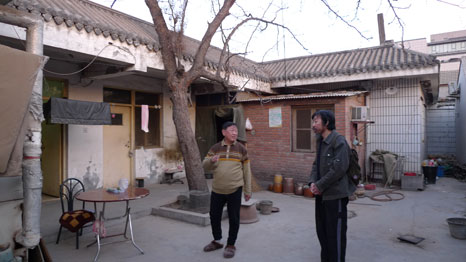
april 2010
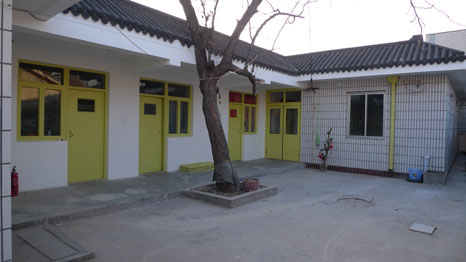
december 2010
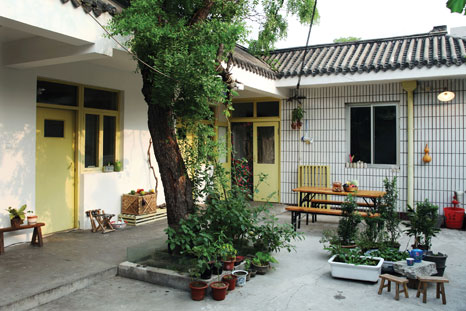
summer 2011
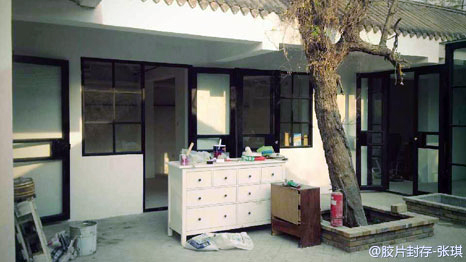
april 2014

april 2010

december 2010

summer 2011

april 2014
 时间 posted on: 1 May 2014 |
时间 posted on: 1 May 2014 |  发布者 author: f |
发布者 author: f |  Comments Off on four springs later, the sick tree is still standing |
Comments Off on four springs later, the sick tree is still standing |
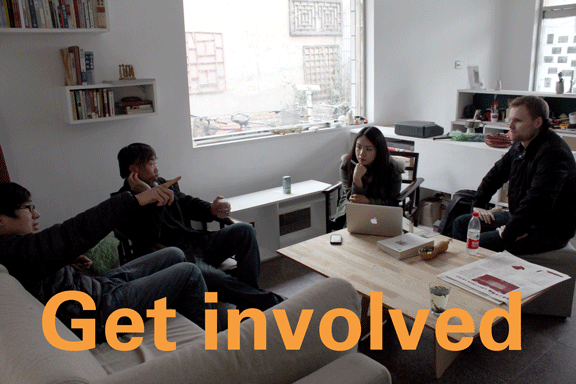
Two interviews in 3 days in March by Asta of Peking University, and photographer and writer Lo Yin Shan. Is this community-based practice?
In the springtime HomeShop had a few visitors, as well as some very curious though inevitable vacancies (including the seeming concerted evaporation of occupants from the workshare space a month ago; now much ameliorated). During this time, and facing an uncertain future, a number of us began considering our established models of supporting and running the space. A discussion among various Beijing-based art spaces and projects also attempted to find some answers to the question of what kinds of activities are felt to be needed now in this city, and how they could be sustained.
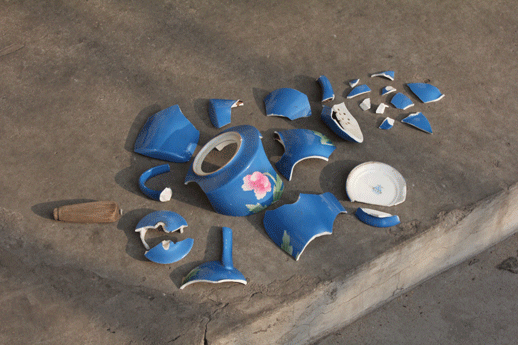
On a return, the Teapot Exhibitions space was found to have been shattered to pieces, December 2012.
For a brief moment, following the positive experience of having UK-based artist Maurice Carlin here as first “official” resident, the idea to pursue a residency program seemed like a good way to regularly fill space and provide some inquisitive new energy, as it keeps many a Beijing institution afloat or well-padded. We consulted our friend at a space in Caochangdi to hear about how their program is run, but found that—however viable such an option might turn out—in our case it would veer down a path of specific identity and program that few of the organizers at HomeShop were really willing to adjust to. Add to that the preparation time required, and we would be looking at the rest of the year singularly geared to making this transition to something we didn’t necessarily feel consensus about achieving.
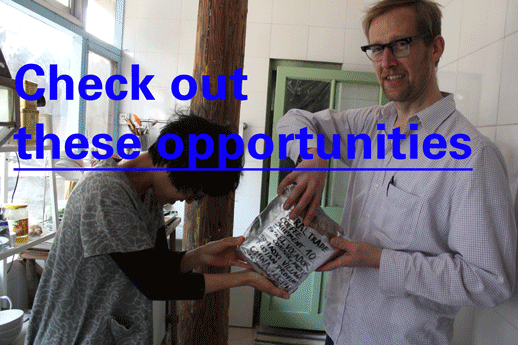
Reinaart Vanhoe and Maurice Carlin each sojourned in HomeShop, April/May 2013.
Likely an existing truism: many of the awkward feelings come from more than the reality of money, but from inside the organizational structure itself. Personal relations ripple through everything we do as a group, as well as all the effects palpable to others. And to us, or to me, at least, it hasn’t always been a desired separation, us and others. But how many others? And who? On that cusp of inside and out, the question of who gets to say, who gets to decide, has never been quite satisfactory to many. “Business” and “art group” sections were proposed at one meeting that seems like ages ago; institutional affiliations too; not to mention suggestions of becoming a real shop or a gallery. (Even old Uncle Long Beard came by one day to ask about starting a restaurant in the front space—if not at our friend’s place across the hutong, which looked empty to him.)

A curious neighbour ponders the latest question on the 問題 blackboard, May 2013.
The physical and social scale of HomeShop seems perfect for trying out the sticky substance of collaborative authorship, but each move has been prone to all the foibles and concentrations of skills and interests particular to the individuals involved. We could say this is natural, but it essentially means a certain recurring, quasi-naturalized predisposition of roles.
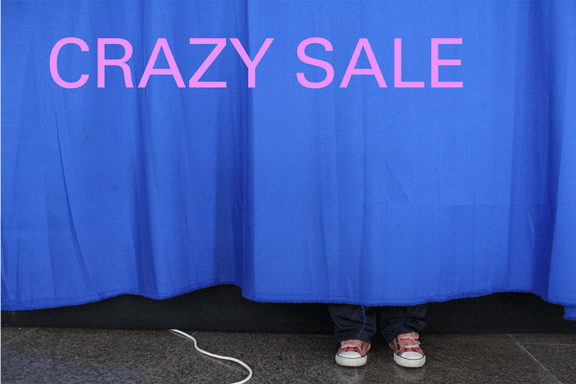
The Party Project does portraits! And political parties! Find out more! Ongoing deal!
This is me editorializing—when my tone turned whiny, another recent returning visitor, Reinaart Vanhoe, recommended giving space and recognizing the specific qualities of the individuals involved. This is true. If part of HomeShop’s character these last couple of years (regardless of which direction it goes in) might have been in prioritizing the values that exist in between those frequenting HomeShop, this may also be seen as its radical difference from many other spaces, organizations, and groups in Beijing. This is also what has left it open to critiques of opacity, inwardness and lack of structure; at the same time, this is what makes it exhausting and insecure. It’s a fiction.
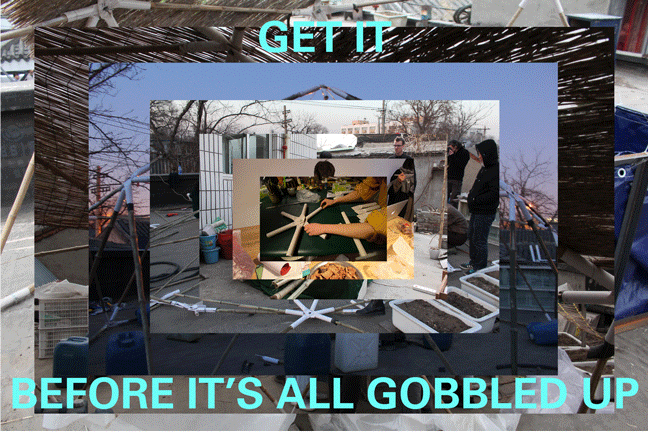
The Aquaponics Workshop, started in early Spring 2013, is finally achieving system operation, with fish on the way any week now!
Giving space: how to understand that at this point? A time that oscillates between a feeling of latter-day busywork and a sense that we are only now achieving certain promises embedded in this inhabitation of HomeShop? Ambiguity and ambivalence sit side by side in the shopfront window with all its virtuality, while this discussion on giving space is for the most part conducted behind closed doors (like this one). In such discussions we talk about what will happen next year when the space’s contract meets its maker. Sometimes it feels a decision has already been made, and sometimes it feels that oscillation has produced the possibility that this decision is not up to us. It might appear in the question, will this given space be missed? or maybe rephrased as, who wants to take it? The offer is there.
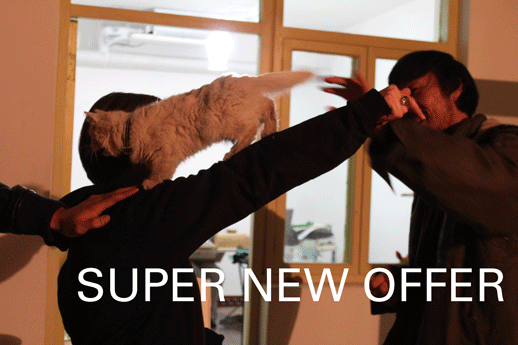
Pointy, circa 2011, one of the many errant cats who have lived and loved and left HomeShop.
*Fine print: Taking the given space wouldn’t be a deal made for survival. In any case, debts may be incurred, facilities and signatures may be withdrawn, free labour may be cut back partially or in whole, and name may be subject to change. Then, you ask, what is offered, exactly? What is it without those things, and what can it become? If you’ll excuse the slippery language, what would be circumscribed by a survivability clause would be a set of possibilities, a certain kind of ground for particular approaches to say, art, design, critical engagement, social organizing, self-determination etc. to come into their own forms. Survivability in a sense meaning, to live beyond the lives of the individuals involved. Again, this is not about legacy, nor about feeling good about taking exits—it is about seeing that value is held by more than this current group of individuals, and recognizing the limits of these individuals in giving space.
My friend, a plurality is on offer! The Beijing wind is on offer!
**Disclaimer: these statements (which are actually questions) are the responsibility of the author and do not reflect the views of HomeShop; no offer is valid unless expressly stipulated by HomeShop.
***Note: This text was written several months ago but put on hold pending a host of unresolved questions that may have caused confusion about what was really being addressed here. At the present time, there are indeed more open discussions about the uncertain future and ways to confront the realities of rising rents, authorship, structure, and cooperation. If you are interested in joining this discussion, get in touch! More people are needed. More info on that soon…
 时间 posted on: 14 August 2013 |
时间 posted on: 14 August 2013 |  发布者 author: michael eddy |
发布者 author: michael eddy |  Comments Off on New Offers |
Comments Off on New Offers |
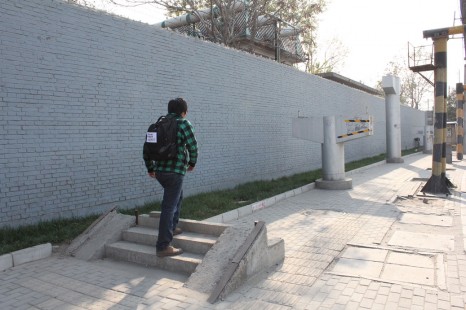
项目招集 /// Call for Participation
直立行走II:重返周口店
5月1日,家作坊将举办第二期“直立行走”项目,再次步行去往北京房山区周口店北京猿人遗址公园。目的地离北京约60公里,耗时约18个小时,晚上在周口店过夜。 作为一个公众参与项目,我们希望每一位参与者能在活动开始前规划出自己的行走路线(走不了全程没有问题,量力而行),并以其为基础,将行走本身视为一种写作,在运动中构建另一种轨迹,无论是历史、个体故事、 意识形态还是任何一种同一性或连贯逻辑的生产或颠覆。 沿途的历史遗迹、当代景观与日常生活系统都可以成为构成上述运动的概念/物理节点。 如果你对本项目感兴趣,欢迎你将你的想法与联系方式发送到我们的邮箱lianxi@homeshop.org.cn。 我们也会于近期发布本次活动的具体日程安排与活动背景。
路线图:
https://maps.google.ca/maps/ms?msid=210439387421320430949.0004d924ec7b761d071c3&msa=0
Walking Erect II: Journey back to Zhoukoudian
On May 1st, HomeShop is embarking on its second walk to Zhoukoudian, location of the famed Peking Man archaeological site. At nearly 60 km from central Beijing, it is a full day’s walk, and our plan includes an overnight stay near the site. However, this journey through time and space is open to those willing to participate.
See the basic route here:
https://maps.google.ca/maps/ms?msid=210439387421320430949.0004d924ec7b761d071c3&msa=0
As a walking project, we are taking the actual historical as well as current sites we pass by as sites for a series of actions along the way, triggering a form of writing-by-walking. (Participants who can’t commit to such distances can also come in at certain points along the route.)
Because of the destination’s symbolic place in modern history and contested place in prehistory, we invite participants to consider histories, stories and false trajectories as contributions, in relation to particular features of the route. The schedule and background of this walk will be rendered in detail soon. Please indicate your desire to participate a.s.a.p. and send your proposals to lianxi@homeshop.org.cn
Join us!
 时间 posted on: 10 April 2013 |
时间 posted on: 10 April 2013 |  发布者 author: 家作坊 HomeShop |
发布者 author: 家作坊 HomeShop |  Comments Off on 直立行走II:重返周口店 /// Walking Erect II: Journey back to Zhoukoudian |
Comments Off on 直立行走II:重返周口店 /// Walking Erect II: Journey back to Zhoukoudian |
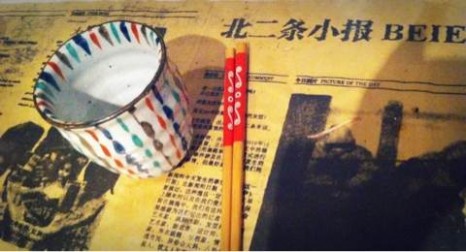 摄影 photo courtesy of // 米店 Detour
摄影 photo courtesy of // 米店 Detour
i remember a very specifically grilling moment one night at 米店 Detour, when we brought new friends from the U.S. over for dinner, and although there existed a humour in the fact that they were sitting in the low sofa next to the window that makes guests look like shrimps across the table from us, sitting on the higher wooden bench, C asked very directly, “So what is HomeShop in a word? What’s your goal, your thing, your manifesto?” It seemed shocking at the time that one could still talk in the arousing tense of the manifesto, but it is difficult to squirm so easily from the high bench out of such forthrightness, so I tried a word:
“Sustainability.”
i think my answer and explanation sufficed at the time—a thinking in terms of different reaches of time: from the passing details of an everyday to the affective time of love, collaboration and friendship, to an environmental question that reaches somewhere beyond our own lifetimes. It was a spontaneous answer compiled from previous considerations not vocalised before, but since that evening the motions of passing detail, collaboration and trying to keep up with the compost build-up have pushed manifesto-like considerations to the wayside. This has been just as 自然而然 a passing of the year though, as I learned from 2007 at Xiaojingchang, so all of the openings, miscommunications and bump-stops that we’ve experienced so far at Beixinqiao cannot be considered regretful, but it is certainly now a moment to reconsider a certain form of temporality after settling into certain other kinds of situatedness, the stickiness of labels, unwanted routines, or the hearing of gossip come round.
Why sustainability and time in a discourse that has previously been dominated by considerations of place, city and the local context? They are not unrelated, of course, but I wonder how these two could have been so independently stressed among certain historical trends of socio-cultural study, from Heidegger to Sloterdijk. Today, three films put me in a sort of stylo-anachronistic quandary, but at the same time, as works or projects, they remind us of a certain specificity of place that cannot be isolated from any form of artistic production. The first two come from CCD Workstation’s Folk Memory Project, and the third was Michael MADSEN’s Into Eternity. In both place and time and somewhere in between, I cannot help but try to place the work of our own little HomeShop.
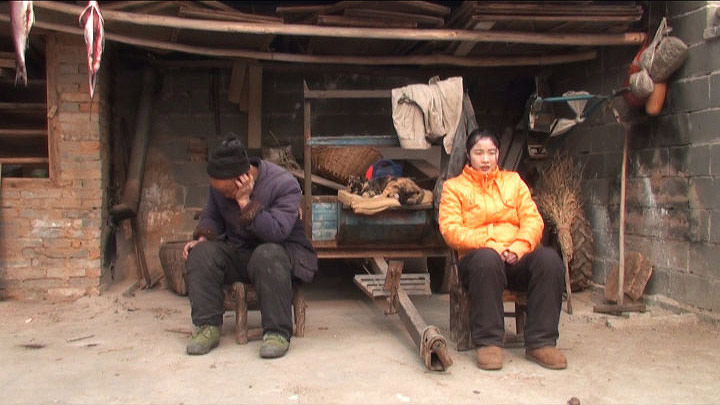 剪图 still image from // 章梦奇 ZHANG Mengqi’s 《自画像:47公里 Self Portrait: At 47 km》
剪图 still image from // 章梦奇 ZHANG Mengqi’s 《自画像:47公里 Self Portrait: At 47 km》
The two films I saw from the Folk Memory Project were 邹雪平 ZOU Xueping’s 《吃饱的村子 Satiated Village》 and 章梦奇 ZHANG Mengqi’s 《自画像:47公里 Self Portrait: At 47 km》. Visually consistent with 吴文光 WU Wenguang’s insistence upon “100% Life, 0% Art”, the two documentaries were unprofessional, sophomore attempts to make film based upon the project call to return to one’s hometown village to document the personal experiences of senior citizens who had lived through the Great Chinese Famine between 1958-61. An explicitly historical documentation is complicated by the personal subjectivities of the filmmakers, mostly born in the 80s with no real connection to the depth of suffering undergone by their elders, who—despite being family or not—were very often unwilling to lay bare the humiliation experienced by the Chinese people. As the camera shakes or the sound is drowned out by wind in the microphone, we are moved to look past the films themselves to their significance as a project, and here we can either see 老吴 Old WU’s genius or his excellent distribution of labour (we could go further into this question in another conversation). Is this a form of looking into history to redress wrongs from the past, or is it a way to recontextualise the things gone astray in our present condition? Both are equally valid, and similar to the activist work of 艾未未 AI Weiwei, it is possible to analyse the mechanics of a microsystem that make such a consideration of time possible. Documentation is important insofar as there is a longer conception of time, whether it be in 章梦奇 ZHANG Mengqi’s decision to edit more footage of a particular woman into her final piece because of a certain personal connection to her spirit (这个讲“气场”或者“fa’r”或者“气质”?), or if we consider the importance of a generation of memories to be lost in the propaganda of a school history book.
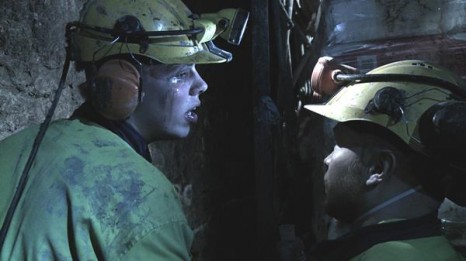 剪图 still image from // 《Into Eternity》
剪图 still image from // 《Into Eternity》
After biking from 798 and coming back to the comfort of HomeShop, I passed through the ghetto set-up of black trash bags covering the windows into the completely calculated time-space of MADSEN’s documentary about the world’s first permanent nuclear waste repository located in Onkalo, Finland. The irony of design calculation to be considered in the extremely controlled camera shots, editing and beautiful composition (could only keep thinking, “how many times did they have to rehearse that shot so that his speech was perfectly timed with the lit fire of the match?”) are set in stark contrast to the gross horror of nuclear disaster and MADSEN’s questioning of the human capacity to consider life “never” or “forever” amidst the limitations of technology. Can we design for “permanent” to preserve all future lifeforms, by a machine set into water or one deep underground, and what markers above ground could be able to communicate this? Can we trust communication or should we rather trust ourselves to the oblivion of forgetting?
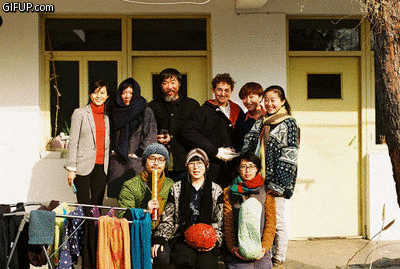 摄影 photo courtesy of // 刘畅 LIU Chang & 高灵 GAO Ling
摄影 photo courtesy of // 刘畅 LIU Chang & 高灵 GAO Ling
Where do we place ourselves amidst history and guesses and predictions into the future? Can time only be a point of view, and do our differences about these considerations make us unable to live together in the present? To talk about sustainability in this sense is an attempt to address different scales of time, but yes, we are limited, and there will always be something neglected despite all carefulness. HomeShop is not about “forever”, you’re right. But time is relative, and all we have to go on at this point is the concreteness of a three-year contract and the temporality implicit in any of the localities we may find ourselves at any given moment. This may be the hutong, the value and “success” of our work, or the waking up in a bad mood. How much do we let go when faced with the extremes of 大自然 and 设计生活, and is trust merely a question of time?
 时间 posted on: 8 April 2012 |
时间 posted on: 8 April 2012 |  发布者 author: e |
发布者 author: e |  comments (7) |
comments (7) |